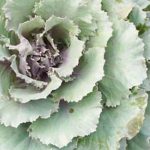Are you looking to start a fruitful and bountiful garden in the Mid Atlantic region? Look no further. With its diverse climate and soil conditions, the Mid Atlantic provides an excellent environment for growing a wide variety of fruits and vegetables. Whether you’re a beginner or an experienced gardener, this comprehensive guide will help you navigate the unique challenges and opportunities of fruit and vegetable gardening in the Mid Atlantic.
The Mid Atlantic region encompasses a wide range of climates, from the cooler temperatures of the northern states to the milder conditions further south. This diversity allows for a rich assortment of crops to be grown throughout the region. Additionally, the area has a long history of fruit and vegetable gardening, with traditions that have been passed down through generations. This deep-rooted horticultural heritage has contributed to a wealth of knowledge about what grows best in the local environment.
In this article, we will delve into the best fruits to grow in the Mid Atlantic, providing recommendations for varieties that thrive in this specific climate and soil. We’ll also offer tips for successful cultivation and maintenance practices. Furthermore, we’ll explore a comprehensive list of vegetables that are well-suited for the Mid Atlantic region, along with advice on planting, caring for, and harvesting these vegetables in order to help you achieve a thriving garden year after year.
Best Fruits to Grow in the Mid Atlantic
The Mid Atlantic region offers a diverse climate and soil conditions that make it well-suited for growing a variety of fruits. From the cooler temperatures in the northern areas to the warmer coastal regions, there are plenty of options for fruit cultivation in this area. Additionally, the rich history of fruit growing in the Mid Atlantic has contributed to a wealth of knowledge and expertise that can be tapped into by today’s gardeners.
Recommended Fruits for Mid Atlantic Gardens
When considering what fruits to grow in your Mid Atlantic garden, it’s important to take into account the specific climate and soil characteristics of your location. Some popular options include apples, peaches, pears, and cherries, which thrive in the region’s temperate climate. For those looking for smaller fruits, berries such as strawberries, blueberries, and raspberries also do well in the Mid Atlantic.
Tips for Successful Fruit Cultivation
To ensure successful fruit cultivation in the Mid Atlantic, it’s important to choose varieties that are well-adapted to the local climate and soil conditions. Proper care and maintenance are also crucial for a bountiful harvest. This includes regular watering, fertilizing as needed, pruning when necessary, and protecting plants from pests and diseases.
Creating an Orchard in Your Mid Atlantic Garden
For those interested in creating their own orchard in the Mid Atlantic region, it’s essential to select appropriate fruit tree varieties that can withstand the challenges of the local environment. Careful planning and maintenance will be key to ensuring a thriving orchard that provides an abundance of delicious fruits year after year.
Overall, with careful selection of fruits tailored to the Mid Atlantic environment and proper care techniques employed by gardeners in this region will yield a fruitful harvest each season. The unique temperate climate found across this area allows for an array of fruits that can be grown successfully by both novice and seasoned gardeners alike.
Top Vegetables for Mid Atlantic Gardens
Popular Vegetable Choices
When it comes to vegetable gardening in the Mid Atlantic region, there are several options that thrive in the area’s climate and soil conditions. Some popular choices for Mid Atlantic gardens include tomatoes, peppers, cucumbers, zucchini, kale, lettuce, carrots, and green beans. These vegetables are well-suited for the region and can be grown successfully with proper care and maintenance.
Tips for Successful Cultivation
To ensure successful cultivation of vegetables in Mid Atlantic gardens, it’s important to pay attention to factors such as sunlight, water, and soil quality. Most vegetables require at least 6 hours of direct sunlight per day, so it’s essential to plan your garden layout accordingly. Proper watering is also crucial, as inconsistent or excessive watering can lead to issues such as blossom end rot in tomatoes or split cucumbers.
In addition to these factors, it’s important to select varieties that are specifically adapted to the Mid Atlantic region. Many seed companies offer varieties that are bred specifically for the unique climate and growing conditions of the area. Choosing these varieties can increase your chances of success when growing vegetables in the Mid Atlantic.
Harvesting Tips
Once your vegetables have been planted and cared for throughout the growing season, it’s important to know when and how to harvest them for optimal flavor and freshness. For example, tomatoes should be harvested when they reach full color but before they become overly soft.
Likewise, lettuce should be harvested by cutting the leaves close to the base of the plant rather than pulling up the entire plant. Understanding proper harvesting techniques can help you enjoy the fruits of your labor at their peak quality.
Seasonal Planting Guide
When it comes to successful mid atlantic fruit and vegetable gardening, understanding the seasonal planting guide is vital for maximizing your garden’s yield throughout the year. By following a month-by-month breakdown of when to plant specific fruits and vegetables in the Mid Atlantic, you can ensure that your garden is always productive.
In the early spring, as soon as the soil can be worked, it’s an ideal time to plant cool-season crops like lettuce, spinach, peas, and radishes. These vegetables thrive in the cooler temperatures of early spring and can withstand light frosts. As the days get warmer and longer, transitioning to planting warm-season crops such as tomatoes, peppers, squash, and cucumbers becomes essential for a bountiful summer harvest.
During the fall months in the Mid Atlantic region, you can continue to enjoy a variety of fresh produce by planting cool-season crops once again. Vegetables like carrots, beets, kale, and broccoli can be sown for a late season harvest.
It’s also a good time to start thinking about overwintering certain crops or planting cover crops to improve soil health for the following growing season. By following this seasonal planting guide tailored to the specific climate of the Mid Atlantic region, you’ll be well on your way to a successful fruit and vegetable harvest throughout the year.
Soil Preparation and Maintenance
When it comes to successful mid atlantic fruit and vegetable gardening, preparing and maintaining the soil is crucial for healthy plant growth and high yields. The diverse climate and soil conditions in the Mid Atlantic region require careful attention to soil quality and structure. Here are some important considerations for soil preparation and maintenance in your garden:
1. Soil Testing: Before planting your fruits and vegetables, it’s essential to test the pH level and nutrient content of your soil. This will help you determine if any amendments are needed to create an optimal growing environment for your crops.
2. Composting: Incorporating compost into your garden bed can improve soil structure, fertility, and moisture retention. Not only does compost add essential nutrients to the soil, but it also supports beneficial microbial activity that enhances plant growth.
3. Improving Soil Health: In addition to compost, consider using cover crops to protect and enrich the soil during fallow periods. Cover crops like clover, rye, or buckwheat can help control erosion, suppress weeds, and enhance overall soil health.
By paying close attention to soil preparation and maintenance, you can ensure that your fruits and vegetables have the best possible growing conditions in the mid atlantic region. From conducting soil tests to incorporating organic matter into your garden beds, taking these proactive steps will set the foundation for a productive and thriving garden. With this focus on soil health, you’ll be well on your way to a successful harvest of fresh produce throughout the year.
Pest and Disease Management
Maintaining a healthy and thriving fruit and vegetable garden in the Mid Atlantic region involves proactive pest and disease management. Common pests in the area include aphids, tomato hornworms, and squash bugs, while diseases such as powdery mildew and blossom end rot can affect crops. Fortunately, there are several strategies for preventing and treating these issues to ensure a bountiful harvest.
One of the most effective methods of pest control is practicing integrated pest management (IPM), which involves using a combination of cultural, biological, and chemical control methods. This approach minimizes the need for pesticides and focuses on natural predators, resistant plant varieties, and other environmentally friendly solutions to manage pests. For example, introducing beneficial insects like ladybugs or lacewings can help reduce aphid populations without resorting to chemical sprays.
When it comes to disease management, proper plant spacing, good air circulation, and watering at the base of plants are important preventative measures. Additionally, choosing disease-resistant plant varieties can greatly reduce the risk of infections. If diseases do occur in the garden, removing infected plants promptly and practicing crop rotation can help prevent the spread of illnesses to healthy plants.
By implementing these pest and disease management strategies, mid atlantic fruit and vegetable gardening enthusiasts can maintain healthy crops while minimizing their environmental impact. With careful monitoring and proactive measures, it is possible to achieve a successful harvest year after year in this diverse region.
Importance of Pollinators
The importance of a healthy population of pollinators cannot be overstated when it comes to successful mid atlantic fruit and vegetable gardening. Pollinators such as bees, butterflies, and birds play a crucial role in the reproduction of many plants, including the fruits and vegetables commonly grown in the region. Without their assistance, the yield and quality of crops would significantly decrease.
To attract and support pollinators in your garden, it is important to plant a variety of flowers that bloom at different times throughout the growing season. This not only provides nectar for the pollinators but also offers them a diverse source of food. Additionally, limiting the use of pesticides and herbicides in your garden can help protect pollinators from harm.
One way to support pollinators in the mid atlantic region is by creating habitats that offer protection and nesting sites. This can include leaving some areas of your garden undisturbed, providing water sources such as bird baths or shallow dishes with rocks for butterflies, and installing bee houses for solitary bees. By creating a welcoming environment for pollinators, you not only benefit your own garden but also contribute to the overall health of the ecosystem in the mid atlantic region.
| Mid Atlantic Pollinator-Friendly Plants | Planting Season |
|---|---|
| Lavender | Spring |
| Sunflowers | Summer |
| Bee Balm | Fall |
Local Resources and Community Gardens
In conclusion, fruit and vegetable gardening in the Mid Atlantic region presents a unique set of challenges and opportunities due to its diverse climate and soil conditions. The rich history of gardening in the area has contributed to a wealth of knowledge about what grows best in this region, making it an exciting place for horticultural enthusiasts.
By taking advantage of local resources and community gardens, gardeners can further enhance their skills and connect with others who share their passion for Mid Atlantic fruit and vegetable gardening.
One of the key factors that contribute to successful fruit and vegetable gardening in the Mid Atlantic is understanding which plants are best suited for this specific environment. From strawberries and blueberries to tomatoes and peppers, there is a wide variety of fruits and vegetables that thrive in the region’s climate and soil. By following a seasonal planting guide, gardeners can maximize their yield throughout the year, ensuring a bountiful harvest.
Furthermore, maintaining healthy soil, managing pests and diseases, and supporting pollinators are crucial aspects of successful fruit and vegetable gardening in the Mid Atlantic. With proper care and attention to these factors, gardeners can create thriving gardens that produce an abundance of delicious, nutritious produce. By utilizing local resources and engaging with community gardens, individuals can continue to learn and grow as they cultivate their own fruitful oases in the Mid Atlantic.
Frequently Asked Questions
What Vegetables and Fruits Can Grow Together?
Some vegetables and fruits can be grown together due to their complementary needs, such as tomatoes and basil, or carrots and peas. This practice is known as companion planting and can benefit both plants.
What Is the Hardest Vegetable to Grow?
One of the hardest vegetables to grow is often considered to be cauliflower. It requires specific growing conditions, such as consistent moisture and cool temperatures, making it more challenging for many gardeners.
What Are the Easiest Fruits and Vegetables to Grow?
Some of the easiest fruits and vegetables to grow include lettuce, radishes, tomatoes, strawberries, and zucchini. These plants are relatively low-maintenance and can thrive in various climate conditions with proper care and attention.

If you’re looking to get into vegetable gardening, or are just looking for some tips on how to make your current garden better, then you’ve come to the right place! My name is Ethel and I have been gardening for years. In this blog, I’m going to share with you some of my best tips on how to create a successful vegetable garden.





